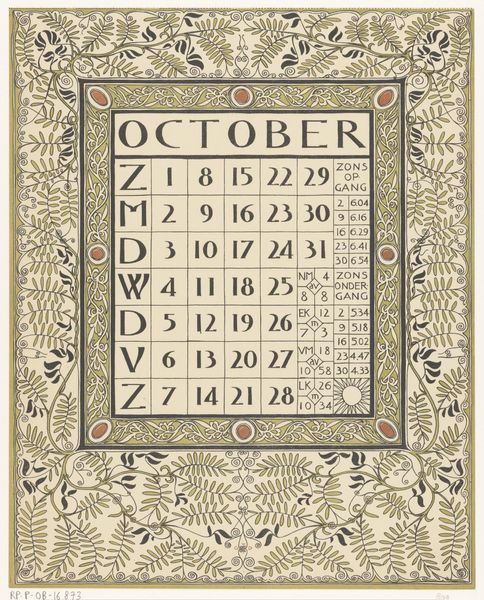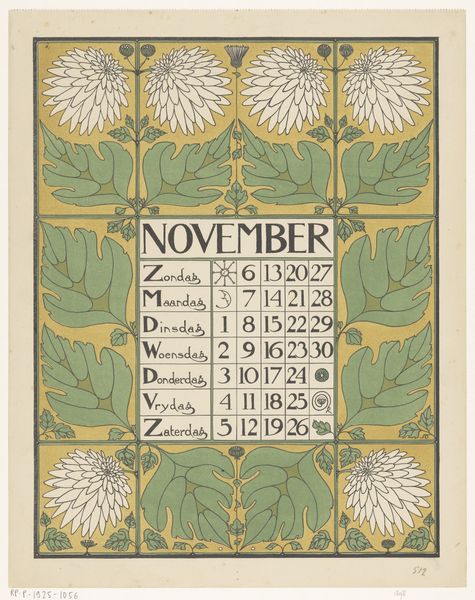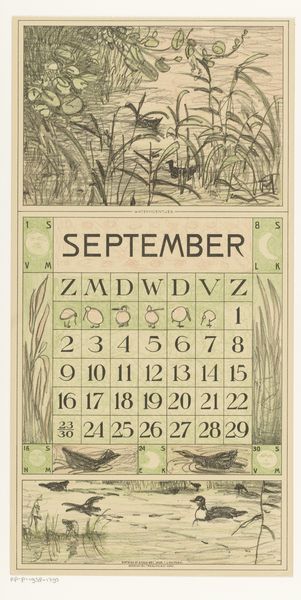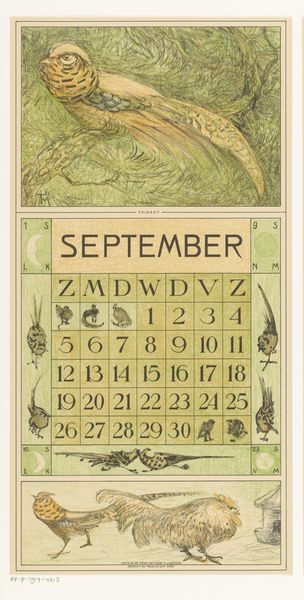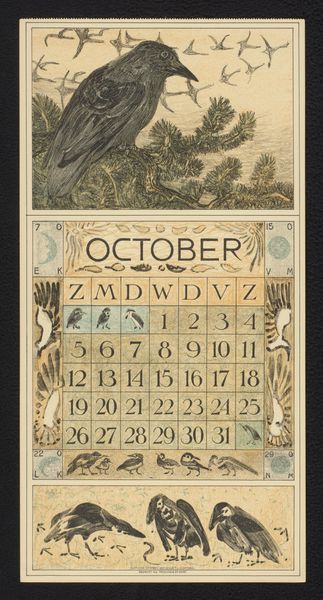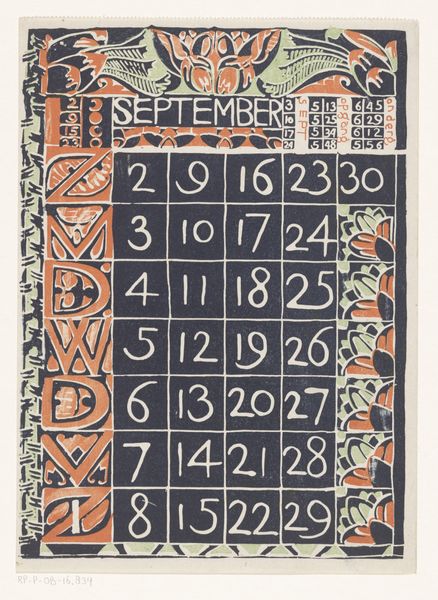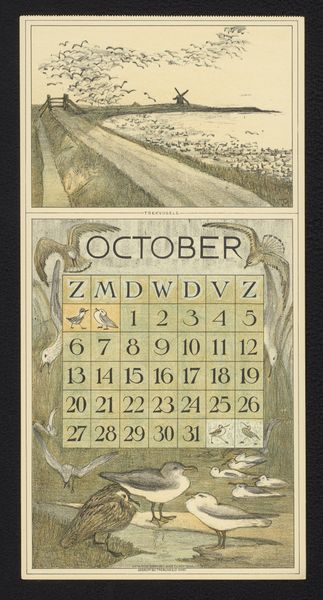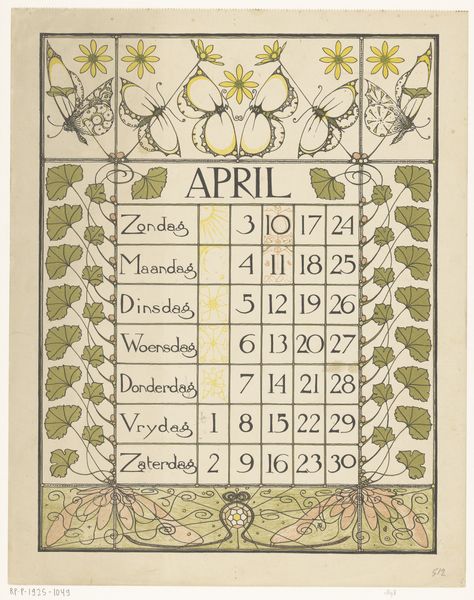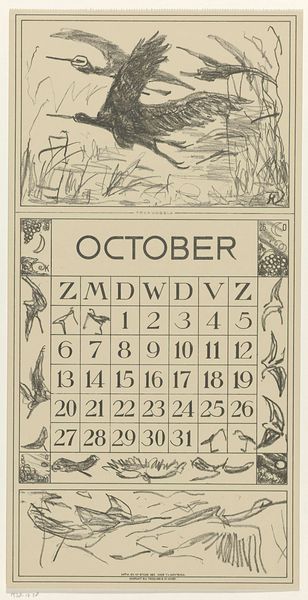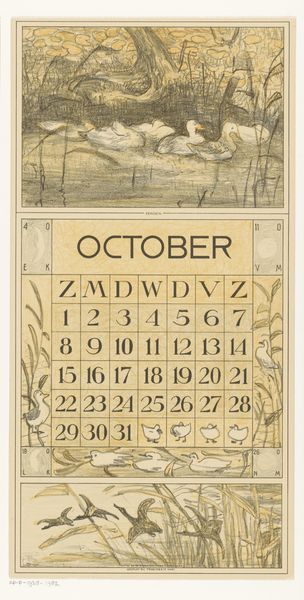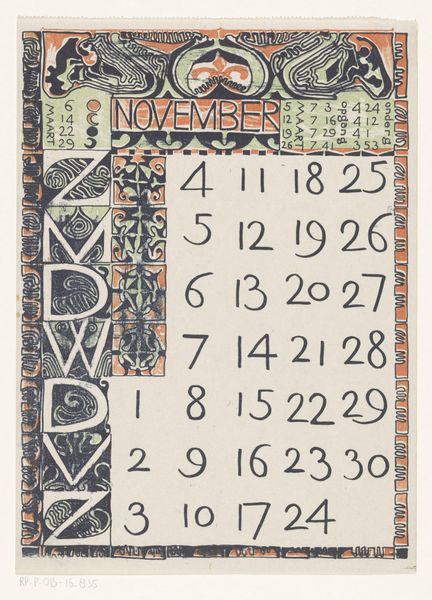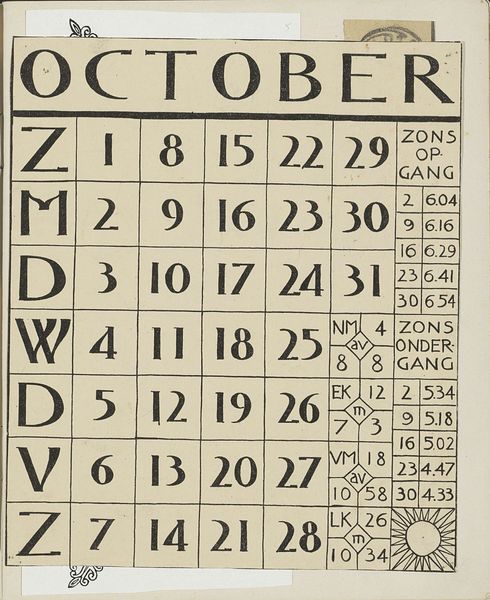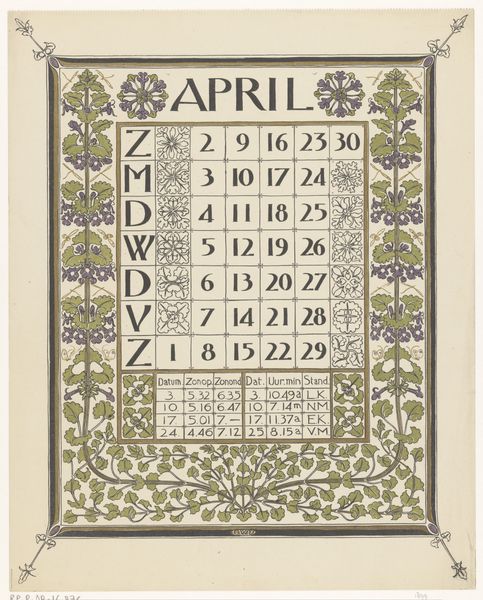
drawing, graphic-art, print, paper, typography, poster
#
drawing
#
graphic-art
#
natural stone pattern
#
art-nouveau
# print
#
paper
#
pattern design
#
typography
#
geometric
#
fabric design
#
repetition of pattern
#
vertical pattern
#
line
#
pattern repetition
#
textile design
#
decorative-art
#
layered pattern
#
poster
#
combined pattern
#
pattern work
#
calligraphy
Dimensions: height 245 mm, width 176 mm
Copyright: Rijks Museum: Open Domain
Curator: This is "Kalenderblad oktober 1900" (October Calendar 1900) by Theo Nieuwenhuis, a print combining typography and floral Art Nouveau design. It resides at the Rijksmuseum. Editor: It's beautiful! It's also interesting to see a calendar page as a work of art. The blend of ornate floral motifs with the practical grid of the dates is compelling, yet subtle. What can you tell me about it? Curator: This calendar isn't merely a decorative object, but also a commentary on industrialization at the turn of the century. Look at the way nature is stylized. Doesn't the regimented pattern mimic the increasingly structured and mechanized nature of early 20th-century life? Editor: So, the artist isn't just decorating, they are commenting on society? How so? Curator: Exactly. The Art Nouveau style, with its organic forms, was in itself a response to industrial design, reasserting the value of handcrafted, individual expression. Now, consider the function of a calendar. What does a calendar do? Editor: It organizes time. Schedules and deadlines! Curator: Precisely. By embedding this structured organization of time within this very handcrafted aesthetic, Nieuwenhuis perhaps poses questions around our relationship with time, labour, and the natural world amidst increasing industrialization. How do we reconcile these aspects? Editor: Wow, I never would have considered that. I just saw it as pretty! So, something functional like a calendar could speak volumes about labour and even resistance. Thank you for that, it's shifted how I view this and similar artworks. Curator: Absolutely. Thinking about an artwork’s broader socio-historical context illuminates what can be, initially, invisible. We've jointly explored how a calendar page isn't just a calendar, it is an encoded social narrative.
Comments
No comments
Be the first to comment and join the conversation on the ultimate creative platform.
